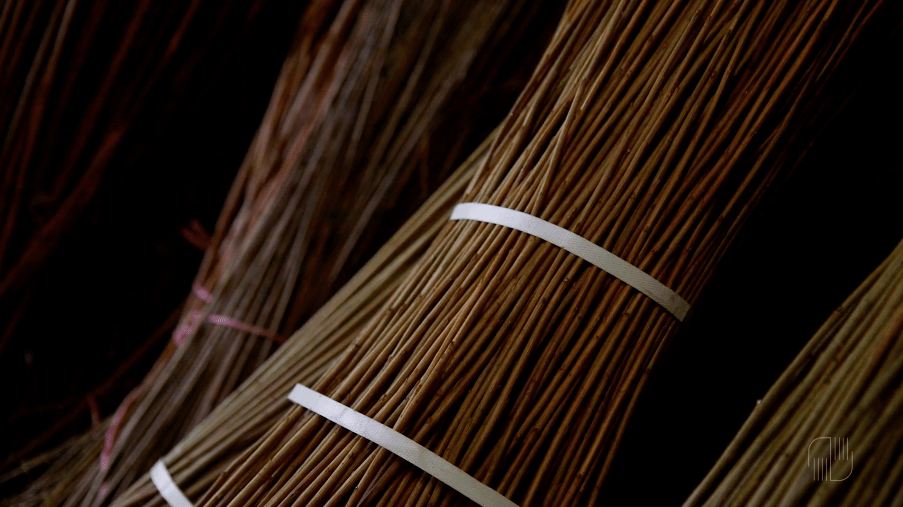Choosing and preparing a site for willow farming
Willow for weaving needs to be planted close together in rows to encourage the growth of kind of long straight shoots that make good baskets. And this means you generally you don’t need as much land as you might think to grow enough for your own use. Plenty of people grow it on a patch at the bottom of their garden. Willow likes very damp soil and it needs sunlight, so don’t plant it in an area that’s too shady.
The first thing you will need to consider is how you will keep weeds under control in the areas you are planting in. It’s important that there aren’t a lot of weeds growing around your willow as this will use up water and nutrients and reduce it’s growth. . In the old days people had to weed their willow farms by hand, which was backbreaking work.
These days a lot of people either put down a silage groundsheet and plant through it, or plant their rows of plants far enough apart that you can get a rotavator (powered weeder) in between them. If you’re just panting in your garden, we would suggest using silage sheet. Lay your sheet out on bare soil and dig in the edges with a shovel. Then weigh it down very thoroughly or it will shift and can end up damaging or burying your plants. The best thing to use for this is old tyres from the local garage, as they’re free and they won’t tear your sheeting. You’ll also need to think about how to keep deer away from your willow as they like eating the fresh shoots when they come up. Many growers with larger plantations put deer fences up.
Planting
Willow should be planted during the dormant season between December and April and is planted using willow cuttings. These are simply 12 to 14-inch sections of green willow shoot that have been recently cut. To plant your willow, first mark out a straight row of the desired length with some pegs and a piece of string. To plant a cutting, make a hole through the ground sheet and into the soil using an old screwdriver or a spike. Then push the willow cutting about 12 inches into the ground, so that only a small section is visible above the soil.
Make sure you plant each cutting the right way up so that the buds on the side are facing upward not downward. You also need to have at least three buds visible above the surface of the soil so that these can grown freely.
Plant each cutting about 12 inches apart and leave a gap of about 3 feet between each row. Planting the willow close together will encourage it to grow straight upward to reach the light and will meant it won’t form branches - no good for weaving baskets.
Coppicing
Let your willow farm grow for a year and a few good shoots will form on each plant. Then next winter, coppice these back down to the ground. This will strengthen the root system and encourage more shoots to grow. You can also take the shoots you have coppiced and cut them up into new cuttings to plant more willow with. This approach is a great way of expanding your willow farm for free. You can use the shoots that grow in year one for weaving, but they won’t be of the highest Quality. Coppice in the same way for the next couple of years, always in the inter when the leaves are off. You will find that the willow forms a head at ground level at the point you have been cutting it back to. This will get wider with time and start producing more willow shoots every year. The yield should increase every year for about 5 years. Again, the denser the rods growing on each plant are, the longer and straighter they will grow, with less side branches.
Harvesting your Willow Farm
Harvesting from your willow farm can be done any time between November and February, which is the period when the leaves are off. Snip the rods off at the base, being careful to leave the head undamaged, and then sort them into bundles of four, five and six feet. You can weave with willow when its still green but sometimes the basket can become a bit loose later once they have dried out. For the best results, tie the willow up into bundles and leave it to dry standing up in a dry indoor space for a few months. A barn is Ideal or a shed if its dry.
We hope this has been a useful introduction to willow farming. If you are interested in willow and willow basketry, check out our lovely home basketry kits. They contain everything you need to get started.
If you would like to read more about crafts, check out our blog on how to weave a willow basket, six amazing baskets you can weave from home, or why learning to make things together is by far the best way to spend time with family and friends.
